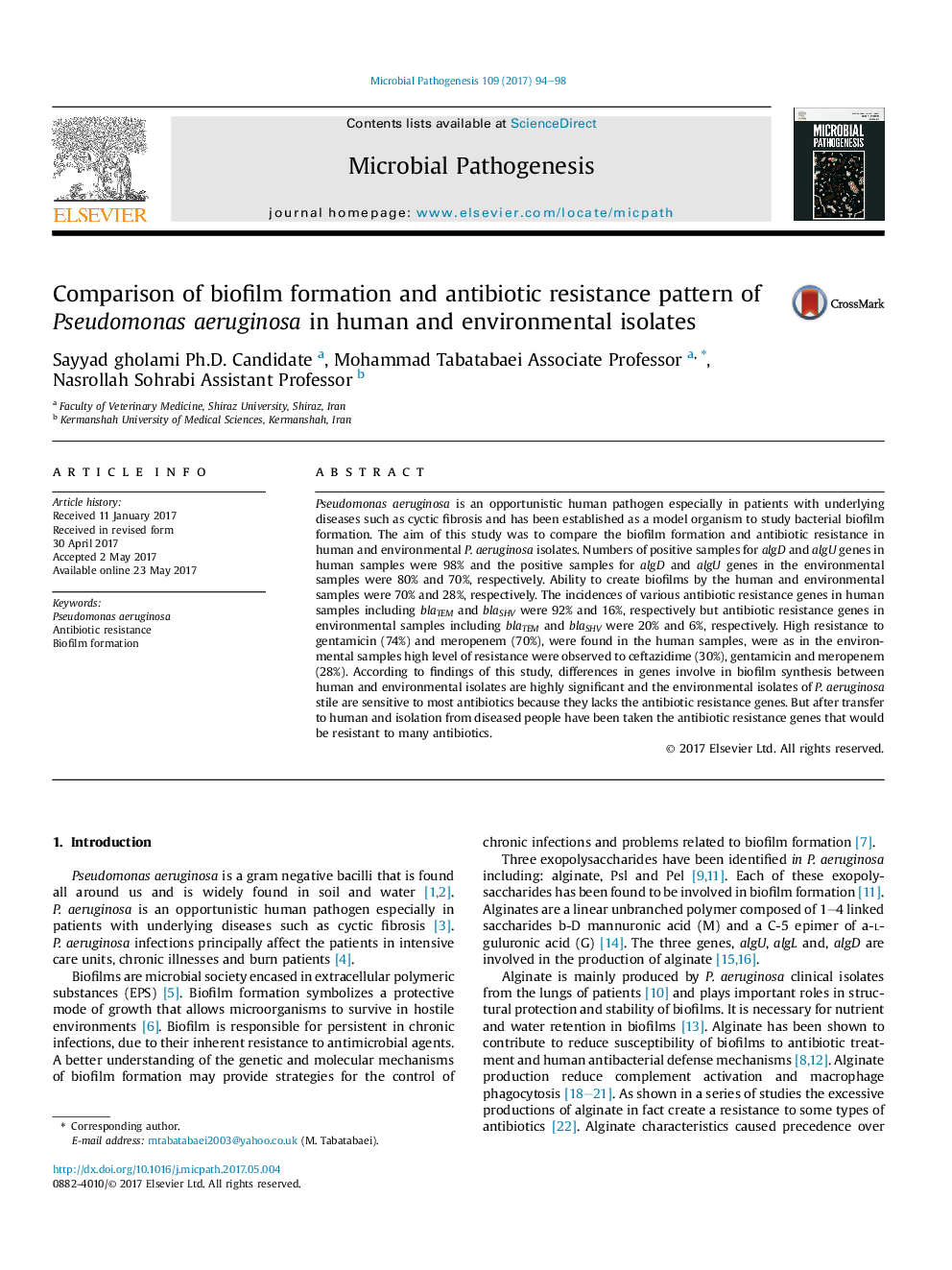| Article ID | Journal | Published Year | Pages | File Type |
|---|---|---|---|---|
| 5673868 | Microbial Pathogenesis | 2017 | 5 Pages |
Abstract
Pseudomonas aeruginosa is an opportunistic human pathogen especially in patients with underlying diseases such as cyctic fibrosis and has been established as a model organism to study bacterial biofilm formation. The aim of this study was to compare the biofilm formation and antibiotic resistance in human and environmental P. aeruginosa isolates. Numbers of positive samples for algD and algU genes in human samples were 98% and the positive samples for algD and algU genes in the environmental samples were 80% and 70%, respectively. Ability to create biofilms by the human and environmental samples were 70% and 28%, respectively. The incidences of various antibiotic resistance genes in human samples including blaTEM and blaSHV were 92% and 16%, respectively but antibiotic resistance genes in environmental samples including blaTEM and blaSHV were 20% and 6%, respectively. High resistance to gentamicin (74%) and meropenem (70%), were found in the human samples, were as in the environmental samples high level of resistance were observed to ceftazidime (30%), gentamicin and meropenem (28%). According to findings of this study, differences in genes involve in biofilm synthesis between human and environmental isolates are highly significant and the environmental isolates of P. aeruginosa stile are sensitive to most antibiotics because they lacks the antibiotic resistance genes. But after transfer to human and isolation from diseased people have been taken the antibiotic resistance genes that would be resistant to many antibiotics.
Related Topics
Life Sciences
Immunology and Microbiology
Microbiology
Authors
Sayyad (Ph.D. Candidate), Mohammad (Associate Professor), Nasrollah (Assistant Professor),
